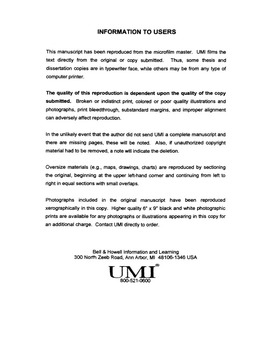| dc.contributor.advisor | Forgotson, James, | en_US |
| dc.contributor.advisor | Philp, Richard P., | en_US |
| dc.contributor.author | Tchouparova-petzeva, Eli Dimitrova. | en_US |
| dc.date.accessioned | 2013-08-16T12:30:45Z | |
| dc.date.available | 2013-08-16T12:30:45Z | |
| dc.date.issued | 1999 | en_US |
| dc.identifier.uri | https://hdl.handle.net/11244/5885 | |
| dc.description.abstract | The present study targets several main aspects of the problem of petroleum wax deposition. The first aspect to be examined is the change in solubility of n-alkane mixtures and wax deposits as related to variability in their compositional characteristics. The approach applied is based on the solubility parameter concept and comparison of theoretical predictions and experimental results derived from solubility measurements of HMW n-alkane mixtures using various geochemical methods and X-ray diffraction. Second, the study examines changes in n-alkane distributions of wax deposits as a function of temperature of deposition. The compositions of wax deposits formed at different laboratory temperatures (cold finger apparatus) and field conditions are compared using quantitative HTGC analysis. Third, the study examines qualitative and quantitative changes in waxes and asphaltenes precipitated from oils produced during the transition from primary to secondary water flood recovery in Prairie Gem field, collected over a period of three years. The samples used in the study include: a standard HMW dominated n-alkane mixture (Polywax 1000); wax deposits formed in a well tubing and a pipeline; and waxes precipitated from both high-wax (Uinta Basin) and low-wax (Prairie Gem field and Gulf of Mexico) oils. | en_US |
| dc.description.abstract | The main conclusions of the study are as follows: (1) The solubility of wax deposits dominated by n-alkanes varies with their molecular weight, or carbon number, distributions and the choice of "optimum" solvent for the deposits varies according to the compositional characteristics of the wax. (2) The composition of wax deposits changes with the temperature of deposition, and increases in molecular weight with the increase in temperature of deposition. (3) Wax deposits formed along the same well tubing or pipeline vary with regard to both composition and solubility. The study suggests that one possible reason for the current inefficiency of methods for wax problem treatment is related to this variability in the properties of wax deposit mixtures. (4) An increase in concentration of microcrystalline waxes and asphaltenes in produced oils is proposed as an indicator predicting a strong possibility for wax deposition problems in well equipment. | en_US |
| dc.format.extent | xviii, 321 leaves : | en_US |
| dc.subject | Solubility. | en_US |
| dc.subject | Waxes. | en_US |
| dc.subject | Geochemistry. | en_US |
| dc.subject | Asphaltene. | en_US |
| dc.subject | Chemistry, Organic. | en_US |
| dc.subject | Chemistry, Polymer. | en_US |
| dc.title | Petroleum wax deposition and production geochemistry: Experimental results and field examples. | en_US |
| dc.type | Thesis | en_US |
| dc.thesis.degree | Ph.D. | en_US |
| dc.thesis.degreeDiscipline | Conoco Phillips School of Geology and Geophysics | en_US |
| dc.note | Major Professors: James Forgotson; Richard P. Philp. | en_US |
| dc.note | Source: Dissertation Abstracts International, Volume: 60-11, Section: B, page: 5399. | en_US |
| ou.identifier | (UMI)AAI9949711 | en_US |
| ou.group | Mewbourne College of Earth and Energy::Conoco Phillips School of Geology and Geophysics | |
